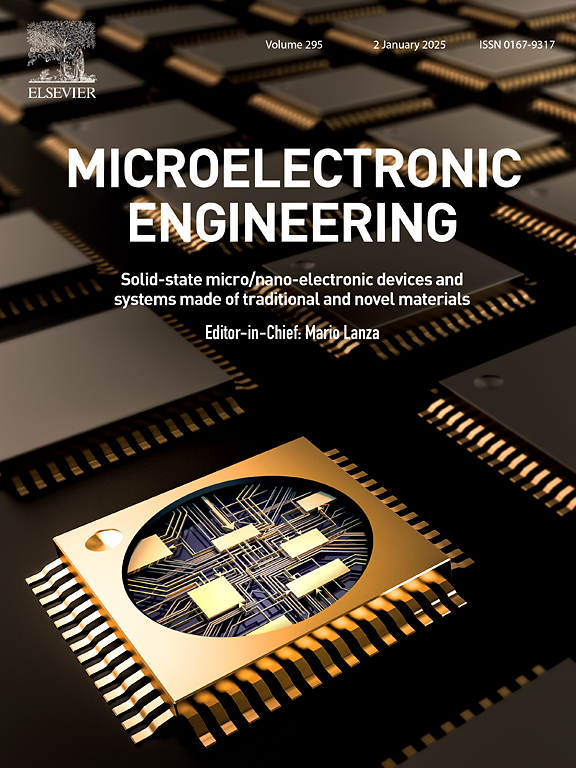3D集成电路中硅通孔和后端线层的热管理:综合综述
IF 3.1
4区 工程技术
Q2 ENGINEERING, ELECTRICAL & ELECTRONIC
引用次数: 0
摘要
三维集成电路(3D ic)由于具有提高性能和降低功耗的潜力而成为半导体研究的前沿。随着半导体技术的进步,3D集成电路的不断小型化和集成密度的增加使得尺寸和界面效应更加明显,从而导致更高的热流密度和更复杂的热管理挑战。通过硅通孔(TSV)和后端线(BEOL)结构作为3D集成电路的核心部件,负责水平和垂直互连,并直接影响芯片内的热传输性能。在这篇综述中,我们概述了热管理在tsv和BEOL结构中的现状,讨论了散热性能,热参数提取,结构优化和布局算法的发展。针对跨尺度模拟的挑战以及表征复杂微纳结构的热性质和温度分布的困难,介绍了微纳尺度理论计算和热测试技术的现状,这些技术已经发展成为三维集成电路热管理的有力工具。本文总结了该领域的主要进展和挑战,强调了解决这些问题对优化tsv和BEOL设计,提高3D集成电路的热管理性能的重要性,为未来的研究提供了有价值的参考和指导。本文章由计算机程序翻译,如有差异,请以英文原文为准。

Thermal management of through-silicon vias and back-end-of-line layers in 3D ICs: A comprehensive review
Three-dimensional integrated circuits (3D ICs) have emerged at the forefront of semiconductor research due to their potential for enhancing performance and reducing power consumption. As semiconductor technology advances, the continuous miniaturization and increasing integration density of 3D ICs have made size and interface effects more pronounced, leading to higher heat flux densities and more complex thermal management challenges. Through‑silicon via (TSV) and back-end-of-line (BEOL) structures, as core components of 3D ICs, are responsible for horizontal and vertical interconnections and directly affect the thermal transport performance within the chip. In this review, we provide an overview of the current state of thermal management in TSVs and BEOL structures, discussing heat dissipation performance, thermal parameter extraction, structural optimization, and the development of layout algorithms. In response to the challenges of cross-scale simulations and the difficulty of characterizing the thermal properties and temperature distribution of complex micro-nano scale structures, the current state of theoretical calculations and thermal testing techniques at the micro-nano scale, which have been evolved as powerful tools in thermal management of 3D ICs, is also presented. This review summarizes the key advances and challenges in this field, highlighting the importance of addressing these issues to optimize TSVs and BEOL designs and enhance the thermal management performance of 3D ICs, providing valuable reference and guidance for future research.
求助全文
通过发布文献求助,成功后即可免费获取论文全文。
去求助
来源期刊

Microelectronic Engineering
工程技术-工程:电子与电气
CiteScore
5.30
自引率
4.30%
发文量
131
审稿时长
29 days
期刊介绍:
Microelectronic Engineering is the premier nanoprocessing, and nanotechnology journal focusing on fabrication of electronic, photonic, bioelectronic, electromechanic and fluidic devices and systems, and their applications in the broad areas of electronics, photonics, energy, life sciences, and environment. It covers also the expanding interdisciplinary field of "more than Moore" and "beyond Moore" integrated nanoelectronics / photonics and micro-/nano-/bio-systems. Through its unique mixture of peer-reviewed articles, reviews, accelerated publications, short and Technical notes, and the latest research news on key developments, Microelectronic Engineering provides comprehensive coverage of this exciting, interdisciplinary and dynamic new field for researchers in academia and professionals in industry.
 求助内容:
求助内容: 应助结果提醒方式:
应助结果提醒方式:


